It was back in the 1920s that Tullio Campagnolo invented the quick-release axle for bikes.
The quick-release axle rapidly replaced screwed bolts on axles and became the standard method used to hold bicycle wheels in place for the majority of road bikes (although you still find bolted axles on fixies, singlespeeds and track bikes) and formed the basis for the Campagnolo brand.
Quick-releases are still used on many bikes today, but they’re rapidly being replaced by thru-axles. Here, we'll explain why and provide an explanation of the many complexities of road bike axles.
Quick-release wheels

A quick-release wheel has a hollow axle, 9mm in diameter at the front and 10mm at the rear, with a 5mm-diameter skewer that passes through it.
Until disc brakes on road bikes became commonplace, all road bikes used rim brakes and they all had front axles that were 100mm wide and rear axles that were 130mm wide.
When disc brakes were introduced, there was a need to increase the width of the rear axle to accommodate the disc brake rotor, so rear axle width increased to 135mm while the front axle remained at 100mm.
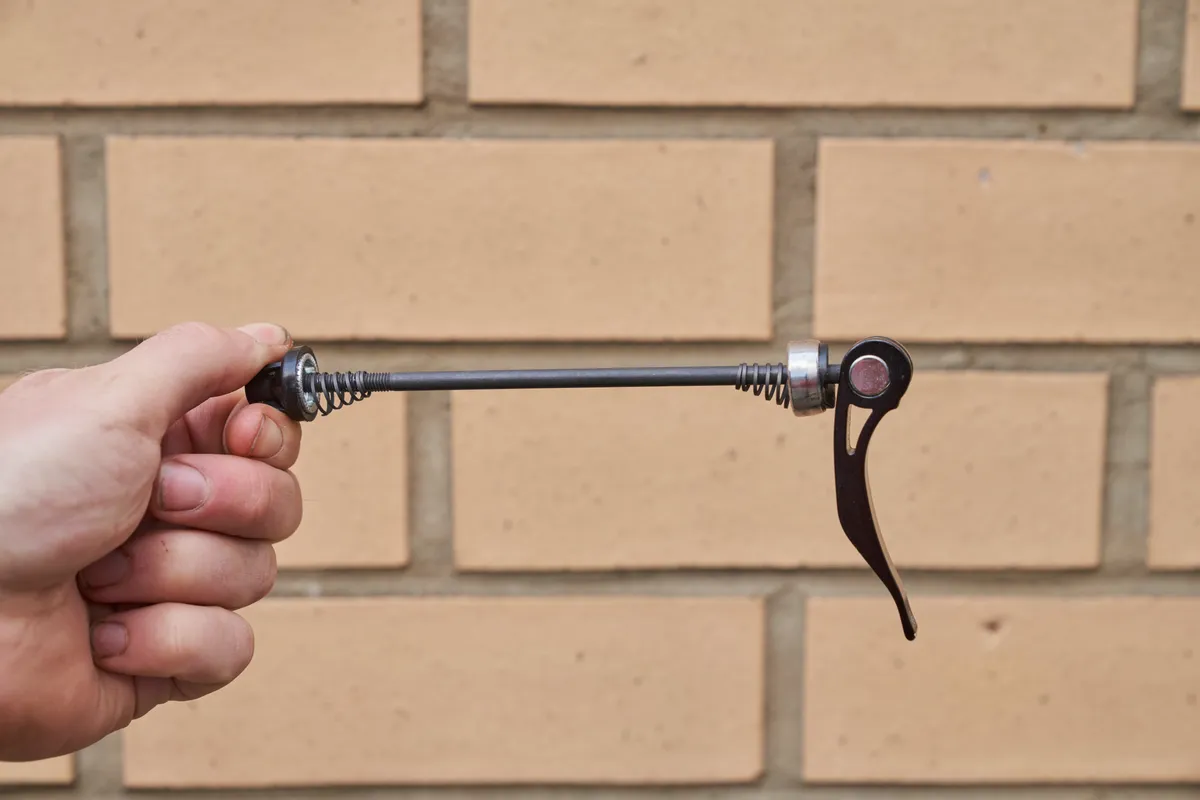
At one end, the skewer has a threaded adjusting nut, while the other end has a head containing a lever that operates a cam. Closing the lever pushes the cam against a knurled nut that tightens against the bike’s dropout, securing the wheel in place.
The threaded adjusting nut enables you to adjust the skewer’s effective length so the connection between the wheel and the bike frame is secure.
There is a conical spring at either end of the skewer to help position it centrally in the axle and make sure both ends release evenly.
The cam mechanism in the quick-release lever can be housed within the lever head, as in Campagnolo’s original design, or on the outside of the body. The latter is cheaper to make, but more prone to contamination. You can’t exert as much force to clamp the wheel in place either.
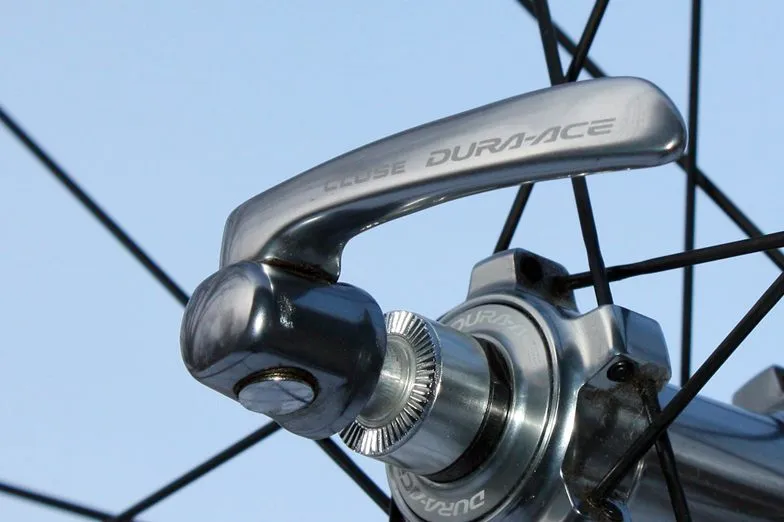
Cheap quick-releases may have plastic parts in the mechanism, which are more compressible than metal, again reducing clamping force. They’re often heavier too and may be made of cheaper steel, so more prone to rust.
You can also find fancy quick-release skewers made of titanium, designed to save a few grams.
Quick-release skewers are rapidly becoming confined to cheaper bikes, although if you buy a fancy rim brake bike it will still use them. You can find quality quick-release wheels too, which will usually have a well-designed skewer as part of the package.
But quick-release axles can be difficult to position accurately in the dropouts. That’s particularly an issue with disc brakes, where the rotor needs to be centred quite precisely within the brake caliper to ensure even wear and prevent it rubbing.
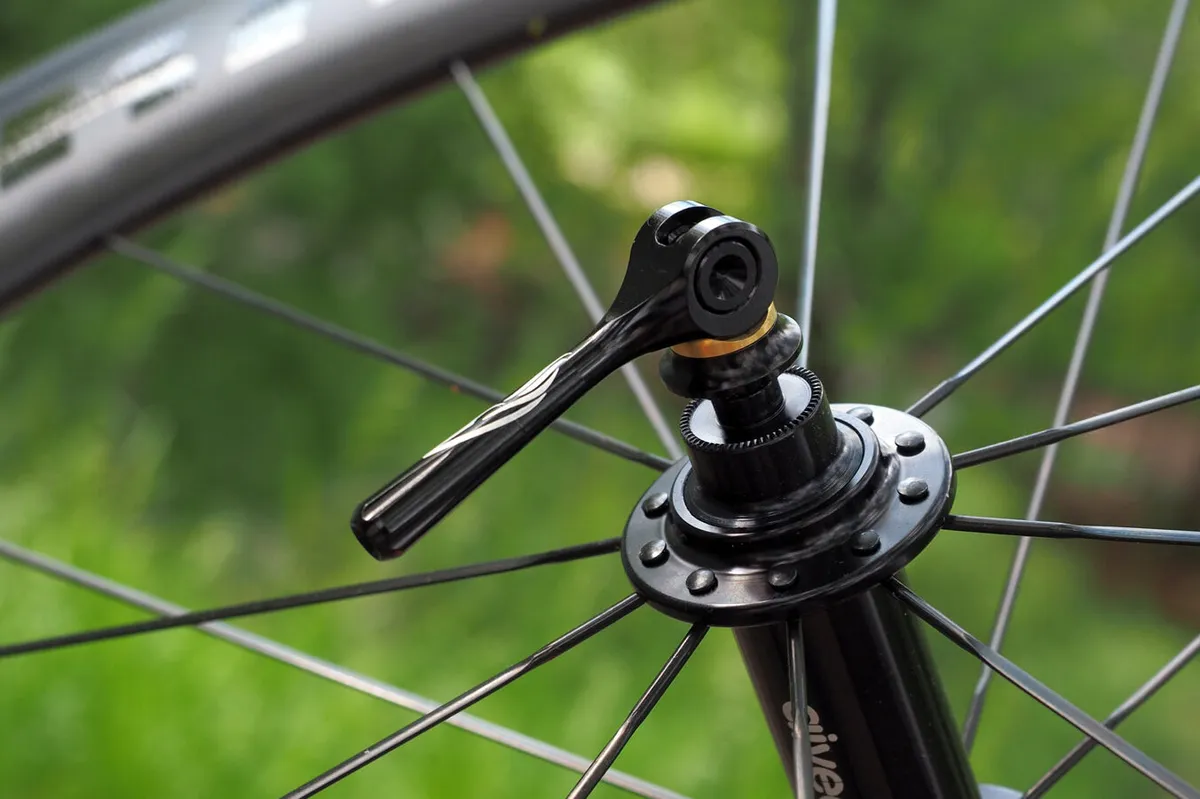
A poorly adjusted quick-release skewer can allow the wheel to move in the bike’s dropouts under pressure too. Again, this can cause misalignment; the worst-case scenario is a wheel could slip out of the dropout completely.
That’s why bikes typically have “lawyers’ lips” on the fork blades to help keep the wheel in place even if the quick-release isn’t adjusted properly, although this slows down wheel replacement because the adjusting nut on the skewer has to be loosened to remove the wheel.
Thru-axles

Enter the thru-axle. It’s a system that was already used extensively on mountain bikes, where the risk and the result of a wheel coming off is potentially even more dangerous than on a road bike.
In a thru-axle system, the dropouts are closed, rather than featuring an open end. That means there’s no risk of the wheel falling out as you ride. The thru-axle passes through the dropout on one side of the wheel and screws into a threaded insert bonded on the other side of the dropout.
As well as being more secure, you can exert more clamping force on a thru-axle for a more rigid interface between the wheel and the frame.
One result of that more rigid connection is that bike makers have been able to build frames lighter, helping to bring the weight of disc brake bikes down to a level comparable with rim brake bikes.

Wheel positioning in the frame is much more precise than with a quick-release system because the wheel cannot be installed wonkily. That means thru-axles work well for disc brakes and is the main reason you’ll find them on the majority of disc-brake road bikes.
At the front, road bike thru-axles are now pretty much standardised at 100mm long by 12mm wide (although some early thru-axle road bikes had 15mm-diameter thru-axles). Rear thru-axles usually measure 142mm long and have a 12mm diameter, but you used to be able to find a few bikes with 135mm thru-axles.

Thru-axles often have a lever built into them, which gives you tool-free removal if you need to fix a puncture or swap a wheel. In some cases, the lever may be removable so you only need one for the pair of wheels – DT Swiss, for example, uses this system.
Some levers incorporate a quick-release mechanism, which is closed to give you the final bit of tightening on the frame but loosens pressure quickly for easier unscrewing.
In other cases, you need to use a hex key or multi-tool to remove the wheel because there’s no lever on the axle. It leads to a cleaner look and less wind resistance, but means you need to carry a tool with you on a ride.
Road Boost

So far, so good. But as with mountain bikes, there are a few variants. Boost wheels and axles are now found on many mountain bikes and this standard is also found in a smattering of gravel bikes and ebikes.
A Boost front axle is 110mm long and 12mm wide, while a rear axle is 148x12mm. The extra length means the bracing angle of the spokes from the hub flanges to the rim is wider, so the wheel is more rigid. But Boost wheels are incompatible with standard frames, so there are limited options if you want to replace your wheels on a Boost road bike.
You’ll find Boost axle spacing on some electric road bikes, such as the Focus Paralane2. Boost helps handle the extra power from the motor, but also leads to a better alignment of the chainline from the mid-mounted motors, which are typically wider than a non-powered bottom bracket.
Boost thru-axles are found on other Focus bikes too, such as the Focus Atlas gravel bike.
Thru-axle complications

Although the almost-standardisation of 12x100mm front / 12x142mm rear thru-axles on road bikes sounds great, it’s not all plain sailing and there are plenty of compatibility issues with road bike thru-axles.
That’s mainly down to the threads used to screw the axle into the frame, where there are different pitches used by different brands.
The thread pitch on a thru-axle may be 1.0mm, 1.5mm or 1.75mm. A coarser thread means it takes fewer turns to remove the axle, so wheel replacement is faster. Plus Mavic Speed Release thru-axles (see below) are double-threaded with two interleaved threads, again leading to quicker insertion and removal.
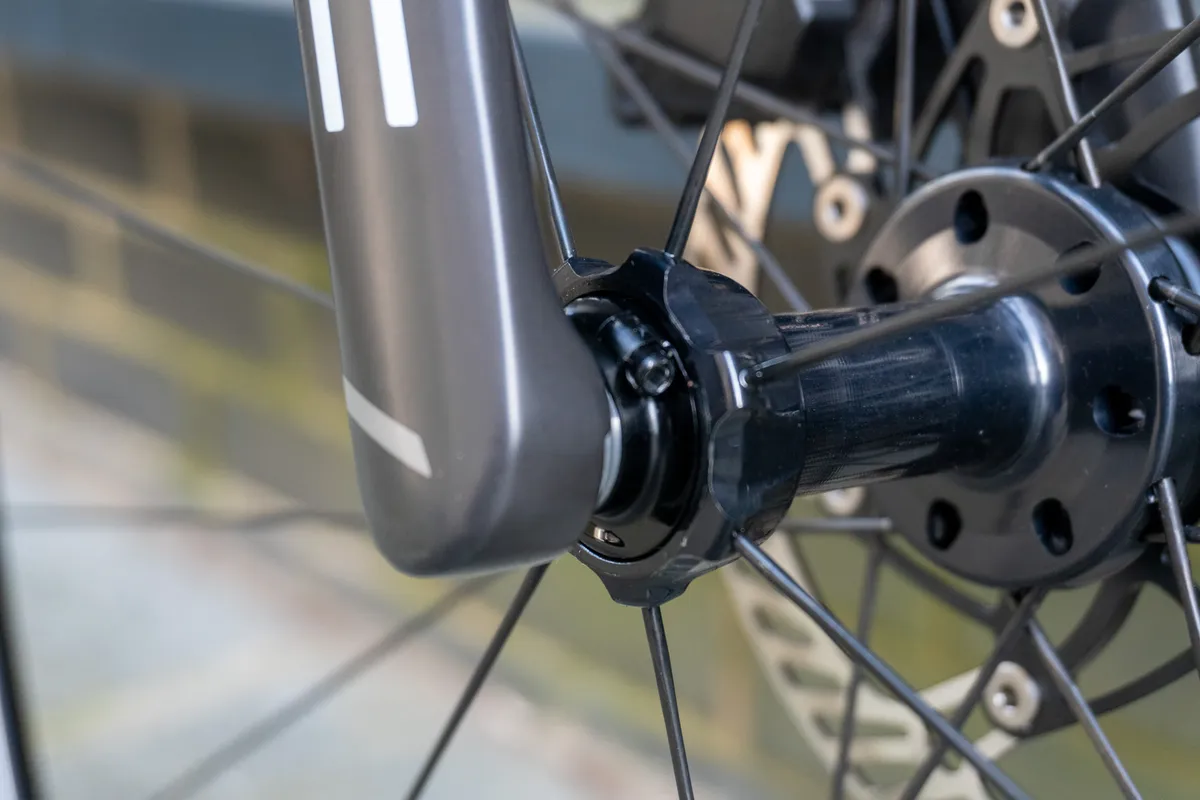
It gets even more complicated because the 100/142mm refers to the width between the inside faces of the dropouts, but the threaded portion of the thru-axle makes it longer than this and it needs to be the right length to fit through the dropouts and thread into them. Again, there are different specs depending on the bike and thru-axle brand.
Another feature that differs between similar thru-axles is whether the near end of the axle has a tapered, cone-shaped face or a flat one.
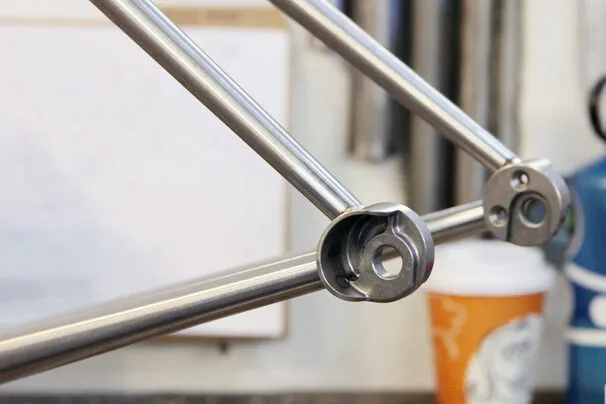
The good thing is that, unlike quick-releases, which are considered part of the wheel and are usually supplied with replacement wheels, the thru-axle forms part of the bike’s frame. Provided you don’t lose it or wreck it, you’re unlikely to need a new one.
If you do need a replacement, many thru-axles have their axle spacing, thread pitch and overall length stamped on them, which makes hunting down the correct one a bit easier. Check out the Robert Axle Project or Tailfin if you need help.
Quicker thru-axles
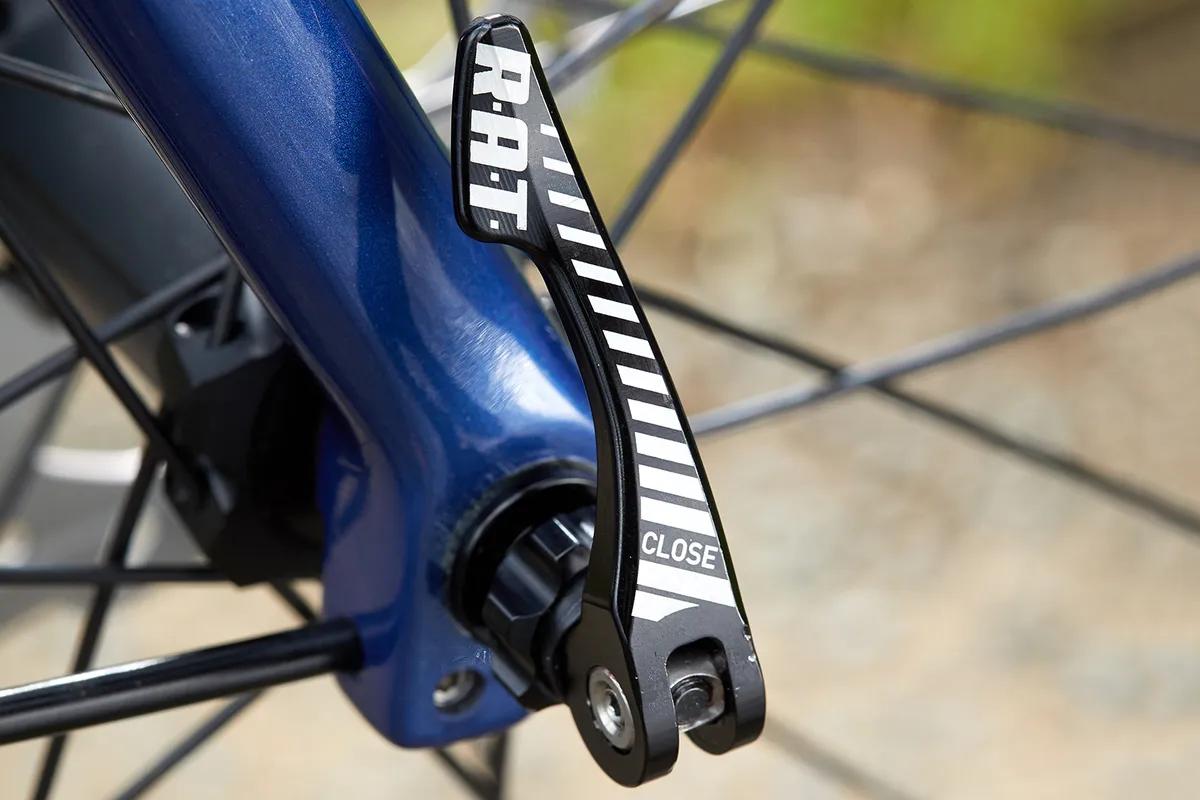
Before thru-axles largely became standardised, there were some attempts at proprietary systems to speed up wheel changes, which was one of the many complaints from the pros when disc brakes and thru-axles first started to appear on road bikes.
One of the first was Focus’s RAT (standing for Rapid Axle Technology) quick-release thru-axle. Instead of threads, RAT thru-axles have a T-shaped head that slots into the dropout. It’s twisted through 90 degrees to secure it in place then tightened using a quick-release lever.
That makes it really quick to remove, and Focus claims it's faster than a quick-release due to the absence of lawyers’ lips. As well as Focus bikes, you’ll find RAT thru-axles on some Merida and Cervélo road bikes.
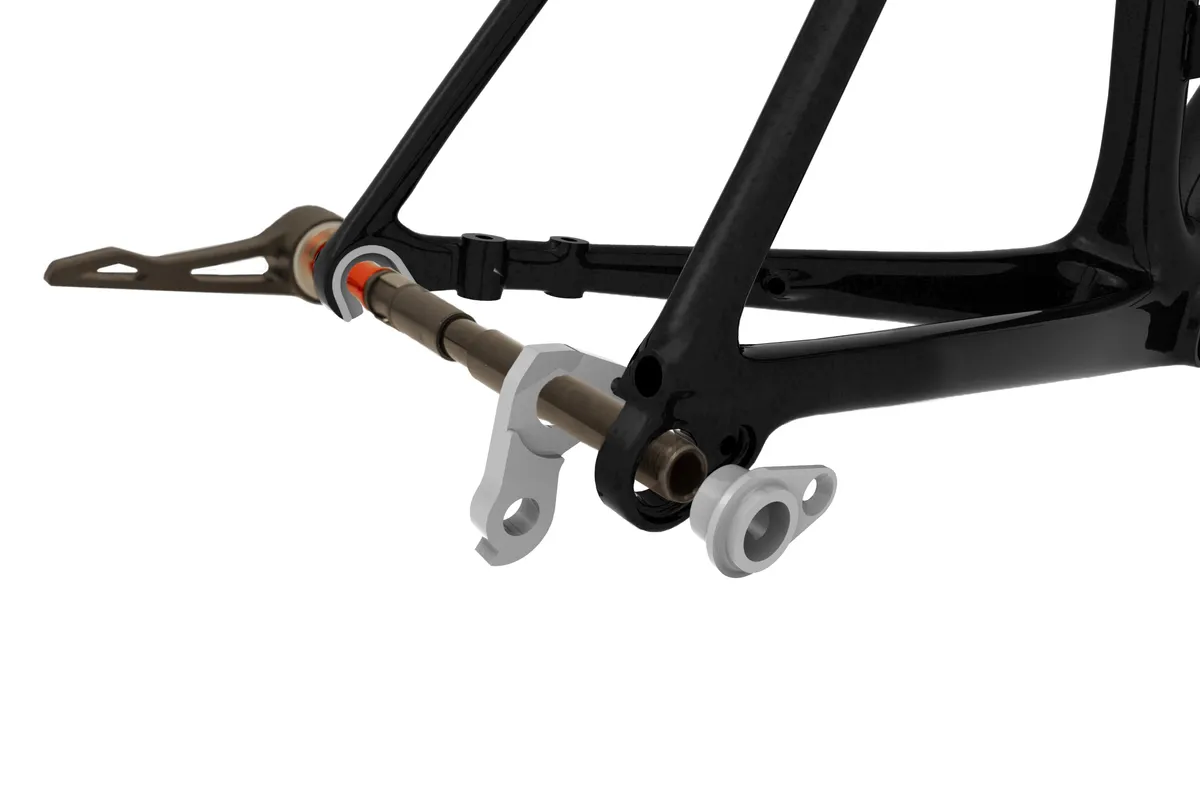
Another option was Mavic’s Speed Release. The thru-axle threads into the dropout conventionally, but the non-threaded side is open.
So once it’s unscrewed, the thru-axle and the wheel come out of the bike as one piece and there’s no need to remove the thru-axle from the wheel.
On the flipside, the bike’s frame has to be designed to use Speed Release, given one of the dropouts needs to have an open-end.
